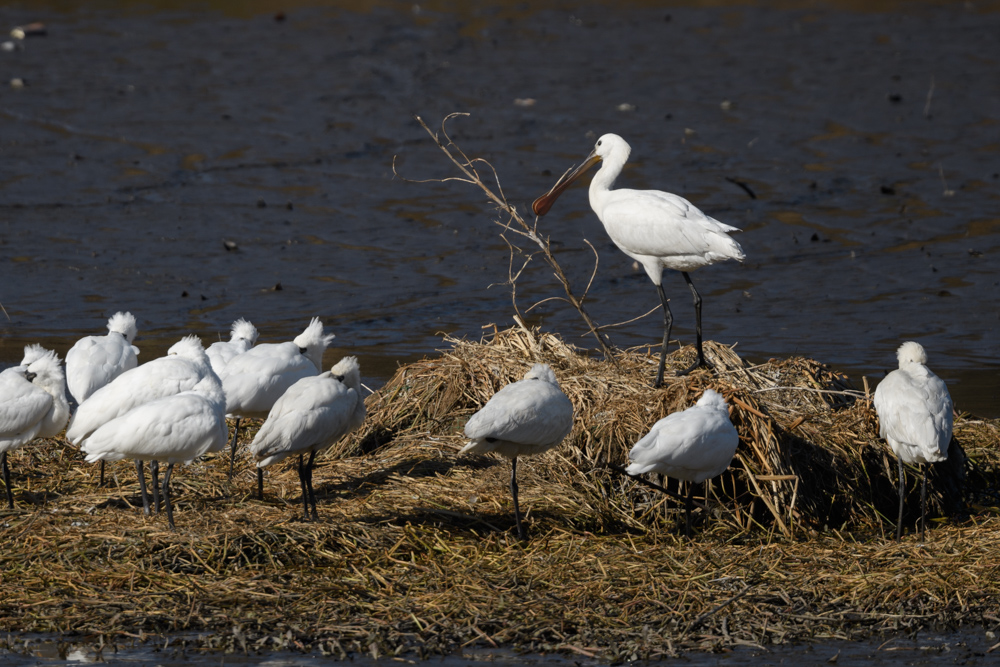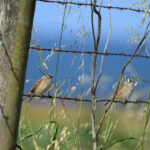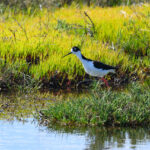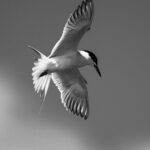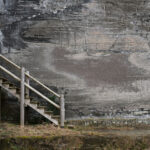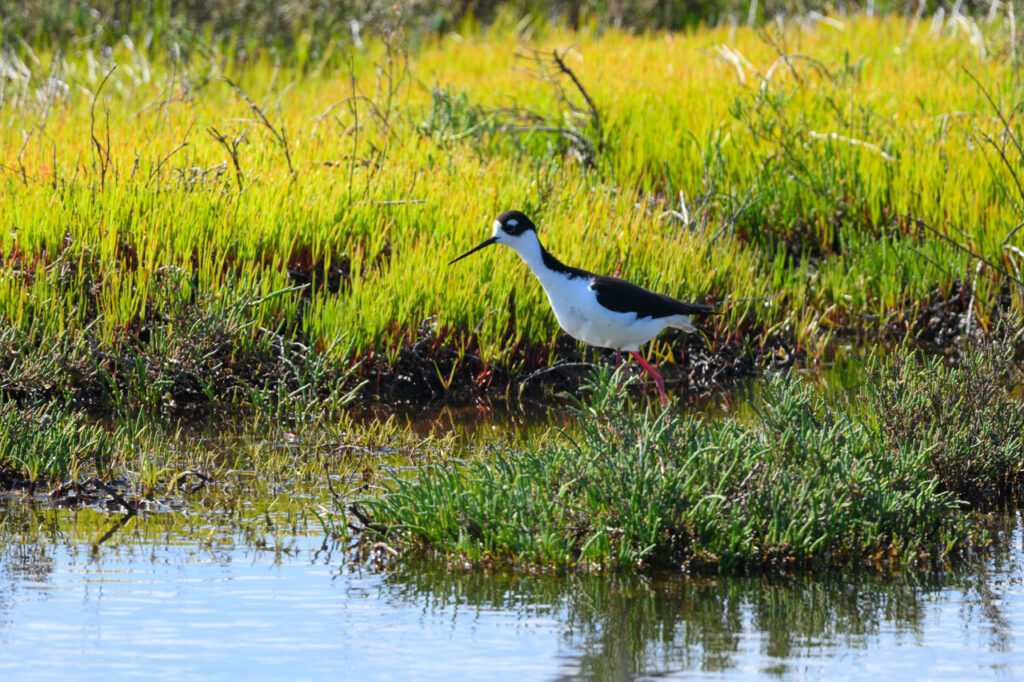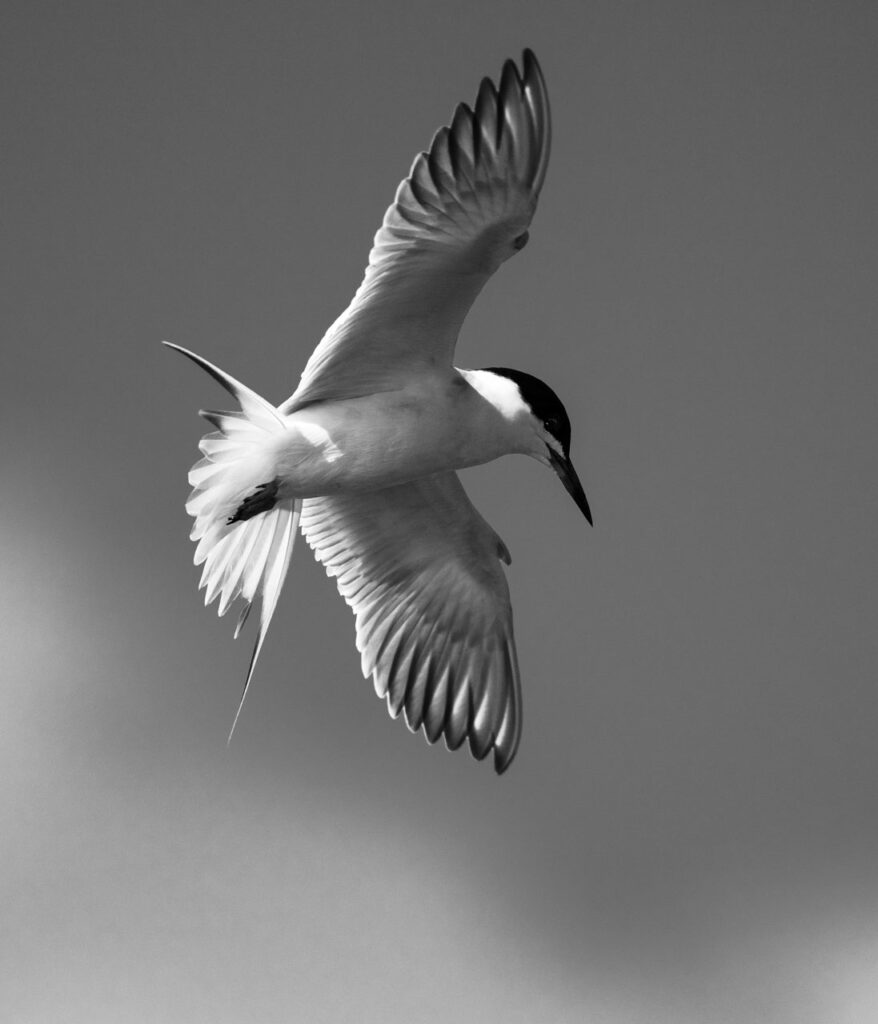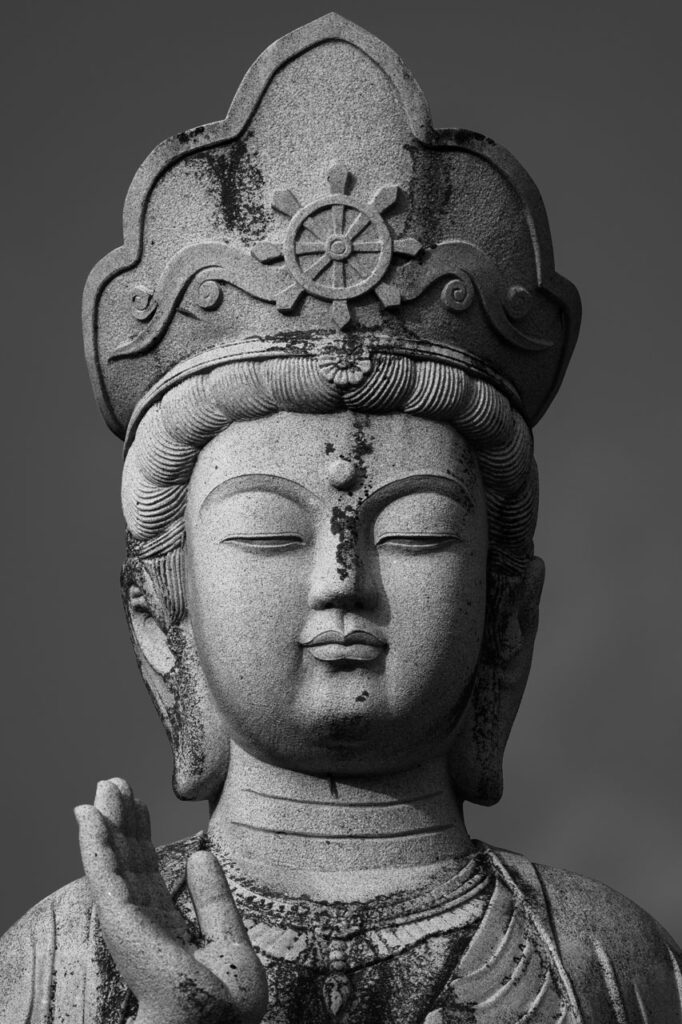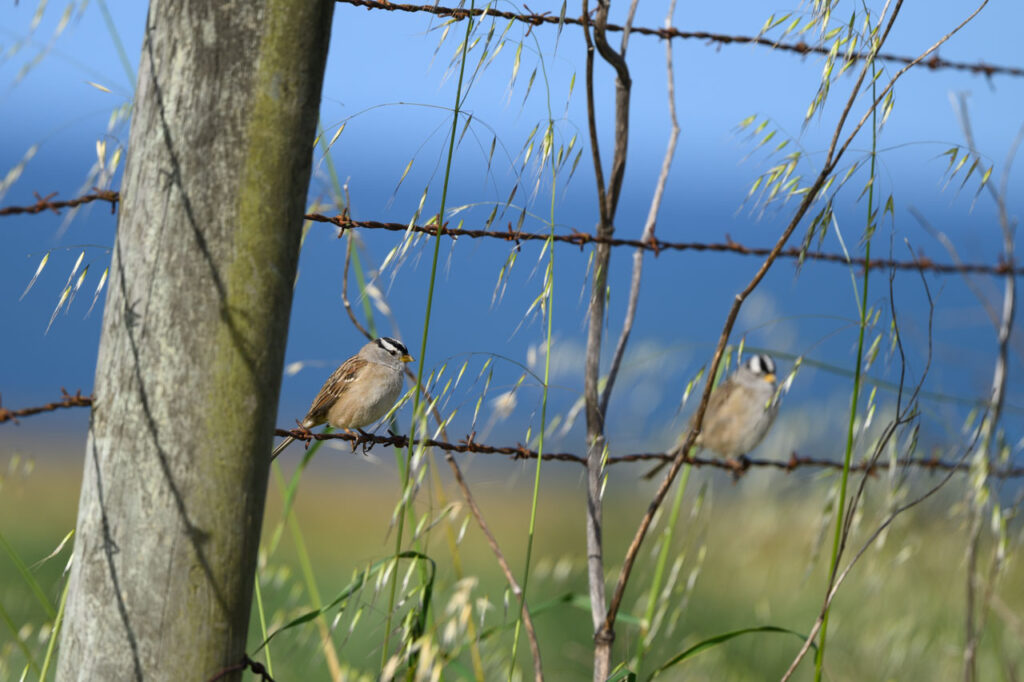
ノスリ、クロツラヘラサギなど / Common Buzzard, Black-faced Spoonbill, etc.
The last of 2021 is from Fukuoka. The Chikushi Plain is located right around the belly button of Fukuoka Prefecture. The Chikushi Plain itself extends to the Ariake Sea side of Saga Prefecture and is one of the largest plains in western Japan.
The reason why I am mentioning this at the beginning of this article is because I believe that such a large plain with a flourishing agricultural industry is rich in grains and insects, and is a good place for wild birds to live. I feel that it is easier to encounter wild birds here than in Yamaguchi Prefecture, which is my usual field. Of course, this may not be true for wild birds living deep in the mountains and forests.
As usual, I used the Nikon D500 + AF-S NIKKOR 500mm f/5.6E PF ED VR.
A crisp shot of a buzzard. Since it did not fly away, I was able to get around to a place where it was not covered by branches.
The dirty yellow iris suggests that this is a juvenile bird. In other photos, the pupil and iris are clearly distinguishable. Other characteristics of the juvenile birds are that the waxwing (fleshy part of the base of the upper bill) should be gray or light blue, but all of them are slightly in the shadows, so I am not sure of the color.
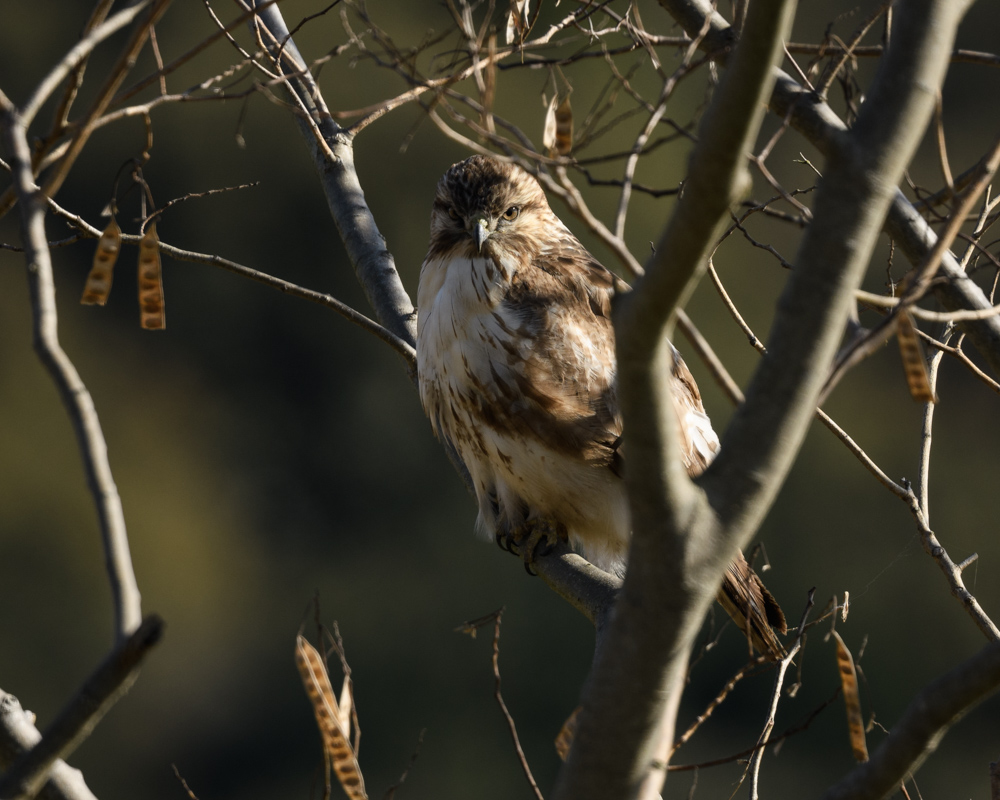
It was a good fit with no trimmings. The tail feathers and other parts of the body of this bird were so tattered that it may have been chased around by crows.
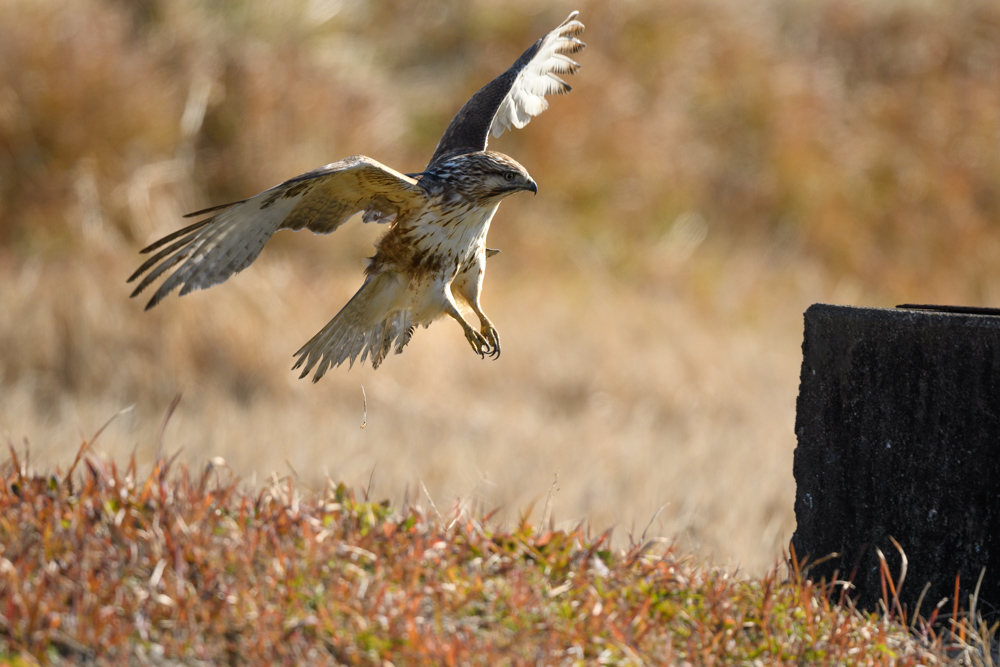
This pose is not a scene of capturing prey, but the sharp claws are clearly visible.
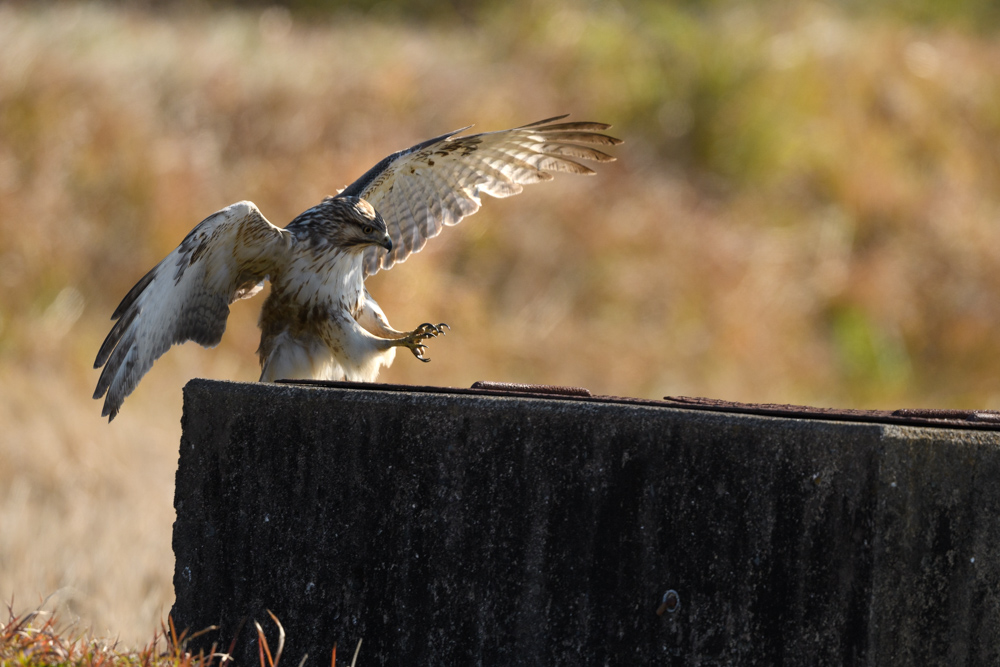
It appeared suddenly from under a nearby guardrail with little caution, as if it were a juvenile bird. The expression on its front face is quite cute. It is said that the female is larger than the male, and the male is the one that its head looks bigger than that of female. This one seems a male.
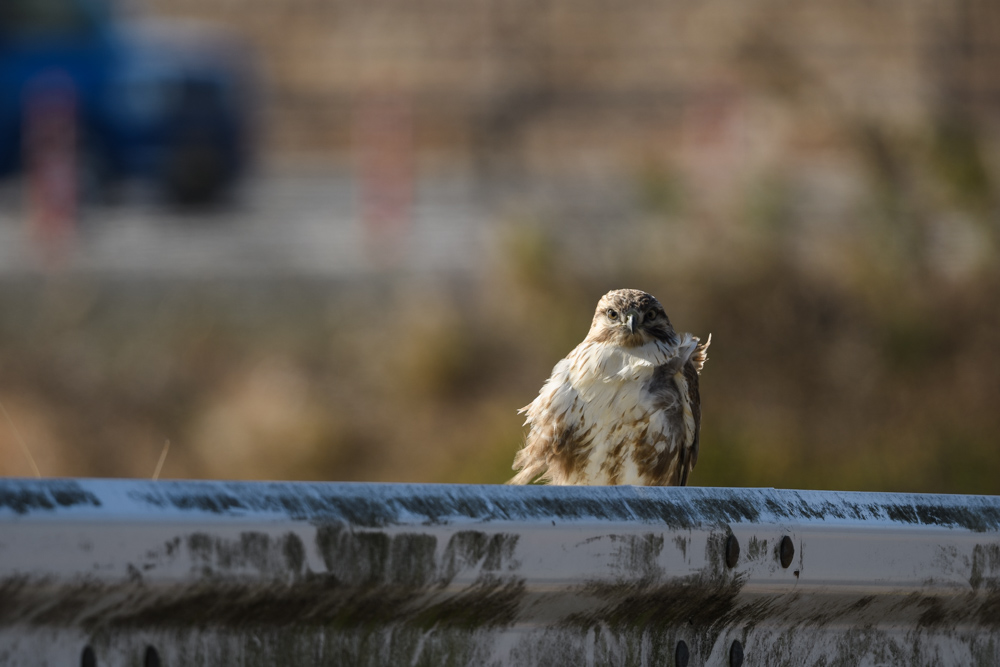
There was also a young falcon with a vertically spotted belly. This area is a plain, and there are no cliffs or high places to be seen, but I wondered if they live on steel towers.
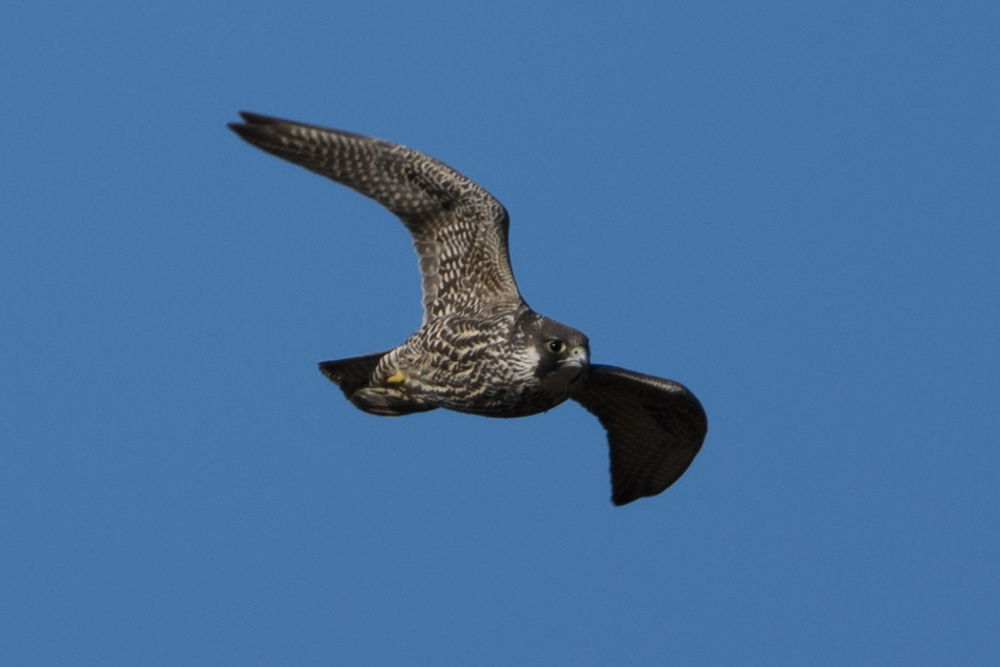
A mixed flock of Eurasian Spoonbills and Black-faced Spoonbills. I didn’t understand it well when I took the photo, but it seems that they are quite mixed.
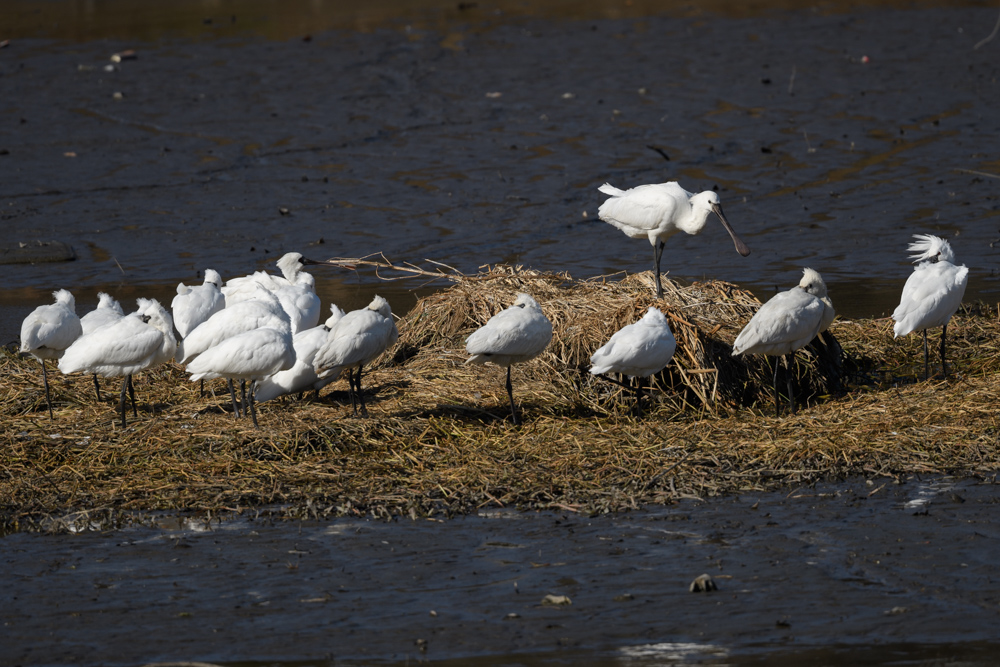
The group on the right in the photo above looks like Spoonbills. The lower left one is unknown.
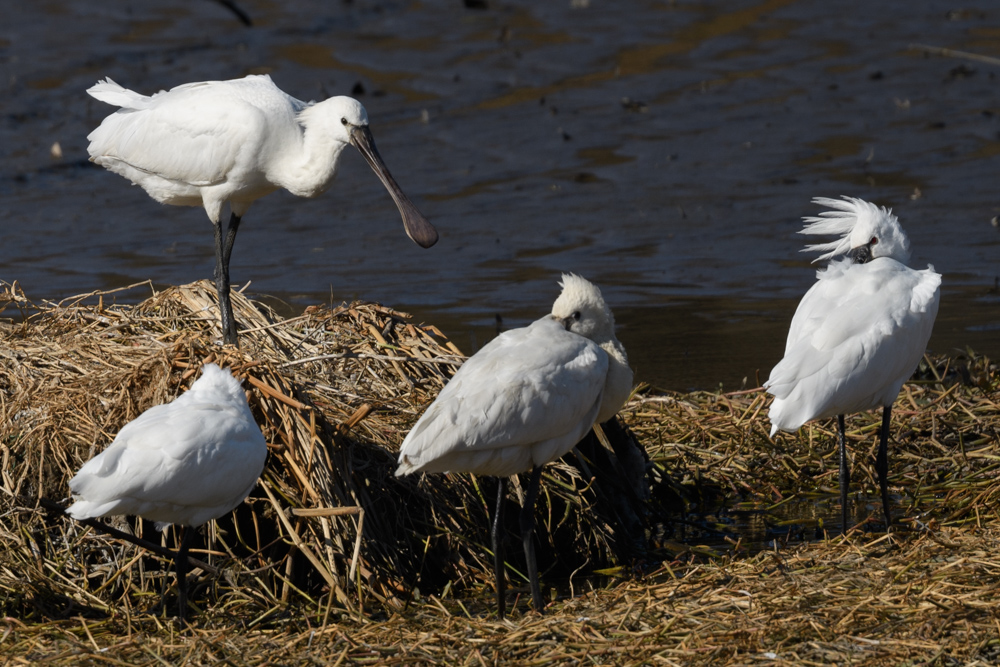
Likewise, the group on the left appears to be Black-faced Spoonbills. At least six of them are visible.
I guess they are more comfortable when they are all together in a group of the same species.
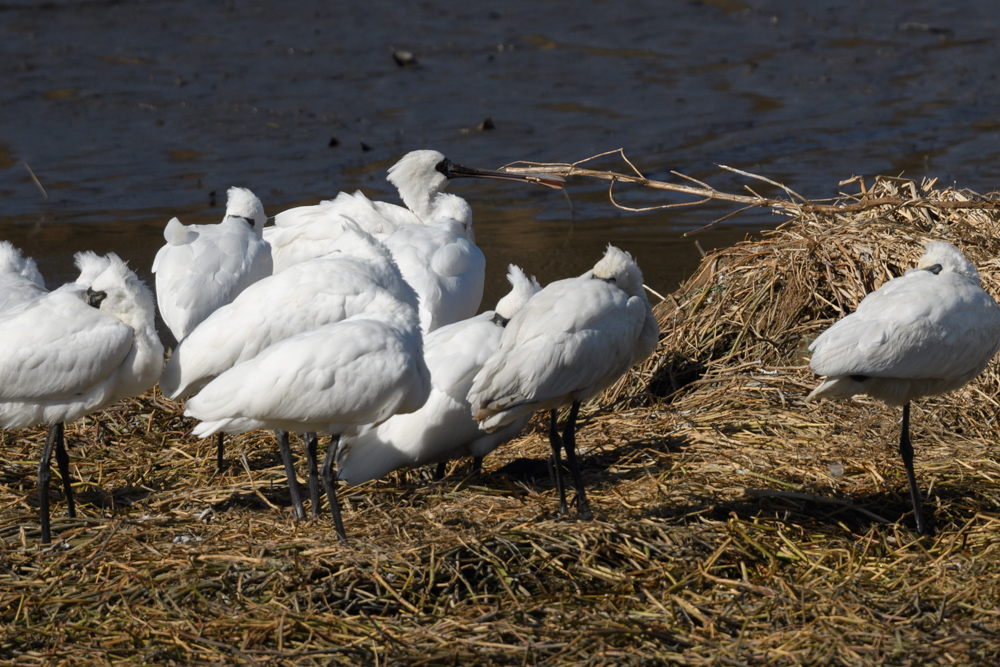
According to the Wild Bird Society of Japan page, the Black-faced Spoonbill is
The Black-faced Spoonbill is a globally endangered species found only in East Asia, and is listed as Endangered on the IUCN Red List and as Critically Endangered IB in the Red Data Book of the Ministry of the Environment.
There are only about 5,000 birds in the world, with about 500 wintering in Japan.
Although I have heard about this “endangered” species quite a bit, it was difficult to say that I understood what it meant, so I did some research.
IUCN stands for “International Union for Conservation of Nature,” which in Japanese is called “International Union for Conservation of Nature,” and is the world’s largest conservation network.
The Red List is a list of 38,543 species (as of October 2021) that have been surveyed and classified by a group of IUCN experts according to the degree of danger they are in, in three categories: CR: near extinction, EN: endangered, and VU: threatened. Note that CR, EN, and VU correspond to the endangered IA, IB, and II categories of the Ministry of the Environment.
Black-faced Spoonbill is the second most endangered species on the list (above CR, it is already “extinct in the wild”). I may not be able to do anything special as an individual, but I hope that I can help spread awareness of this reality.
I saw them constantly moving branches, perhaps they are preparing their beds.
